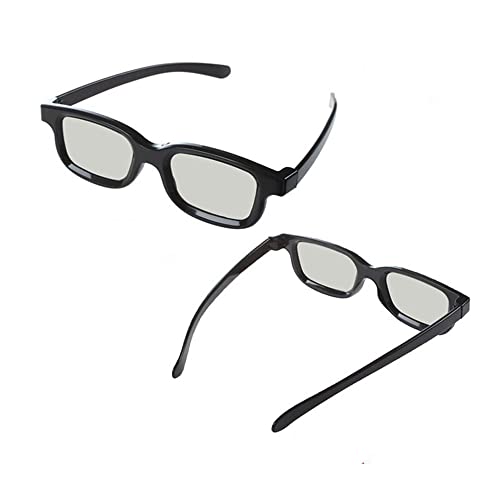Understanding 3D Glasses: What They Are and How They Work
What are 3D Glasses?
3D glasses are special eyewear designed to enhance our viewing experience of three-dimensional (3D) content. They work by creating an illusion of depth when we watch movies, play video games, or view images purposely made for 3D technology. Each lens is equipped to display a different image to each eye, making our brain interpret the slight differences as depth. This technology makes the virtual world pop out at us, giving us a more immersive experience.
How Do They Work?
The way 3D glasses function depends on the type of 3D technology being used. In theatres and for certain television models, 3D is achieved through a technique called stereoscopy, where two images are played simultaneously—one for each eye. The glasses filter these images correctly, allowing each eye to see only the intended image. As a result, our brain stitches these two images together, making us perceive depth.
Types of 3D Glasses: Active vs Passive Explained
Active 3D Glasses
Active 3D glasses are equipped with electronic components that work in sync with your display device. They darken and lighten in quick succession, ensuring each lens corresponds with the image for that specific eye. This means they provide a clearer and more detailed image, making them a popular choice for cinema and high-end television setups. However, they require batteries or a charge, adding a bit of upkeep to your viewing experience.
Passive 3D Glasses
On the other hand, passive 3D glasses do not have electronic components. Instead, they use polarisation filters to allow one image to reach one eye and a different one to reach the other. This type of glasses is often simpler and more affordable since they don’t require power. Many cinemas use them because they’re lighter and more comfortable for audience members to wear for extended periods. Although they may not offer the same level of clarity as active glasses, they are perfectly suitable for casual viewing.
Choosing the Right 3D Glasses for Your Needs: A Quick Guide
Consider Your Viewing Environment
When selecting 3D glasses, think about where you’ll primarily use them. If you are watching movies at home on a compatible 3D TV, determine whether it supports active or passive glasses. Alternatively, if you frequently visit cinemas, check which type they utilise to ensure consistency in your experience.
Evaluate Your Budget
Budget is another important aspect to bear in mind. Active 3D glasses are typically pricier due to their advanced technology. If you’re a casual viewer or the glasses are for a child, passive glasses might be a more cost-effective choice without compromising too much on enjoyment.
Comfort and Fit
Comfort is key when it comes to wearing 3D glasses, especially if you’ll be wearing them for extended periods. Make sure to choose a pair that fits well without feeling too tight or loose. Some brands offer adjustable features or different sizes, so don’t hesitate to try a few on to find the best fit.
The Best 3D Glasses on the Market: Our Top Picks
Active 3D Glasses
For a clear and immersive experience, we recommend the latest models of active 3D glasses that are compatible with most modern TVs. Specifically, look for those that have a long battery life and are lightweight. These usually come with features such as a comfortable nose bridge and superior lens quality for a seamless viewing experience.
Passive 3D Glasses
If you prefer passive 3D glasses, opt for brands that provide good quality polarisers. Look for lightweight versions designed for prolonged use, especially those that can fit over your regular eyewear if needed. Comfort and affordability are prime considerations for casual viewers, and many affordable options still deliver a satisfying 3D experience.
Where to Buy 3D Glasses: Finding the Best Deals
Online Retailers
When it comes to purchasing 3D glasses, online retailers often provide a variety of options and competitive pricing. Websites dedicated to electronics and gadgets typically have a comprehensive selection. Make sure to compare different models and read customer reviews to find the best value for your money.
Local Electronics Stores
Local electronics stores also tend to carry a selection of 3D glasses, especially those linked to specific TV brands. Visiting a store allows you to try on different styles and find a comfortable fit. Additionally, engaging with store employees might provide valuable insights on what suits your individual needs best.






















